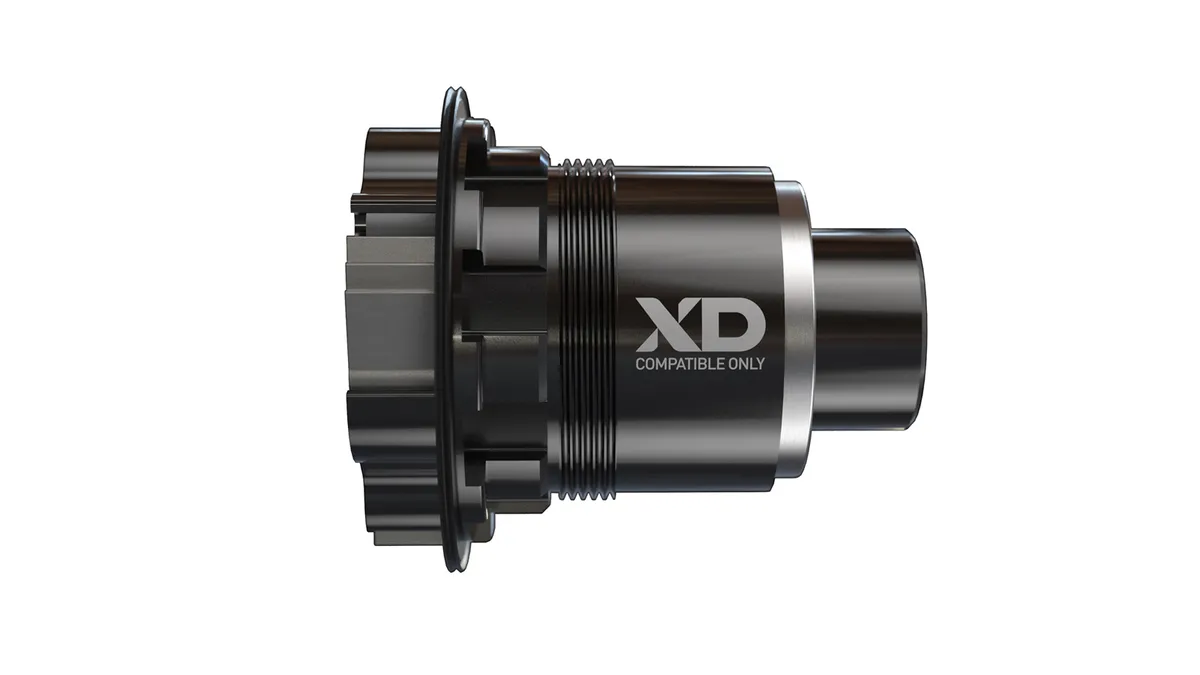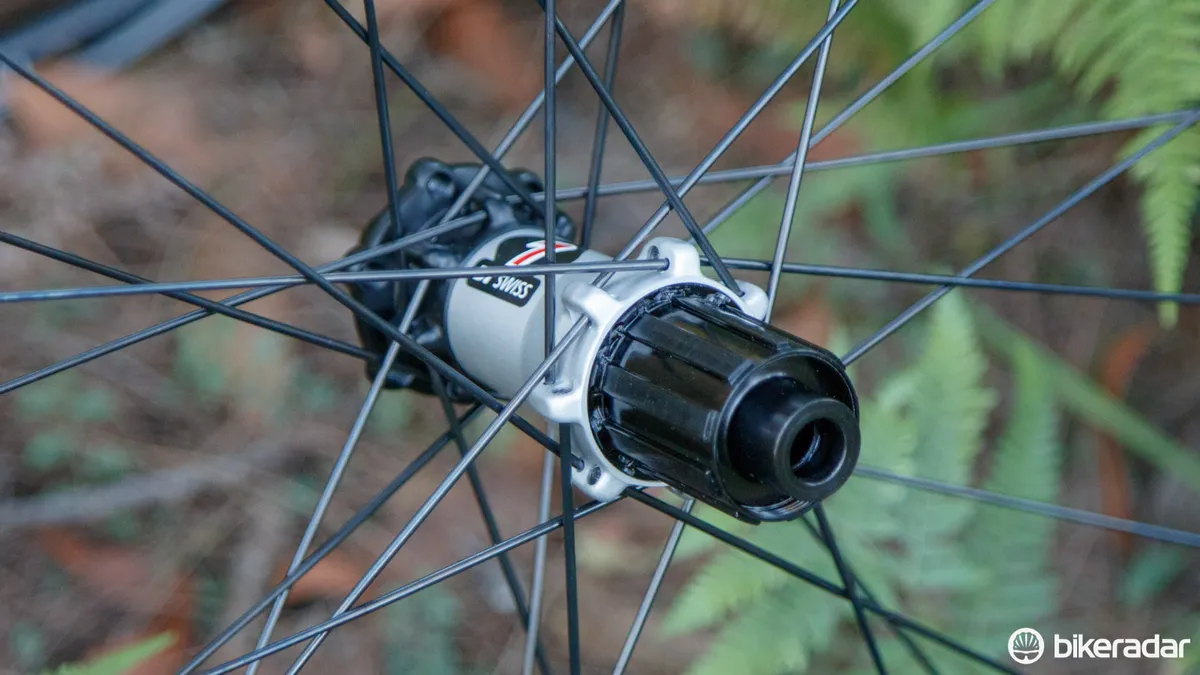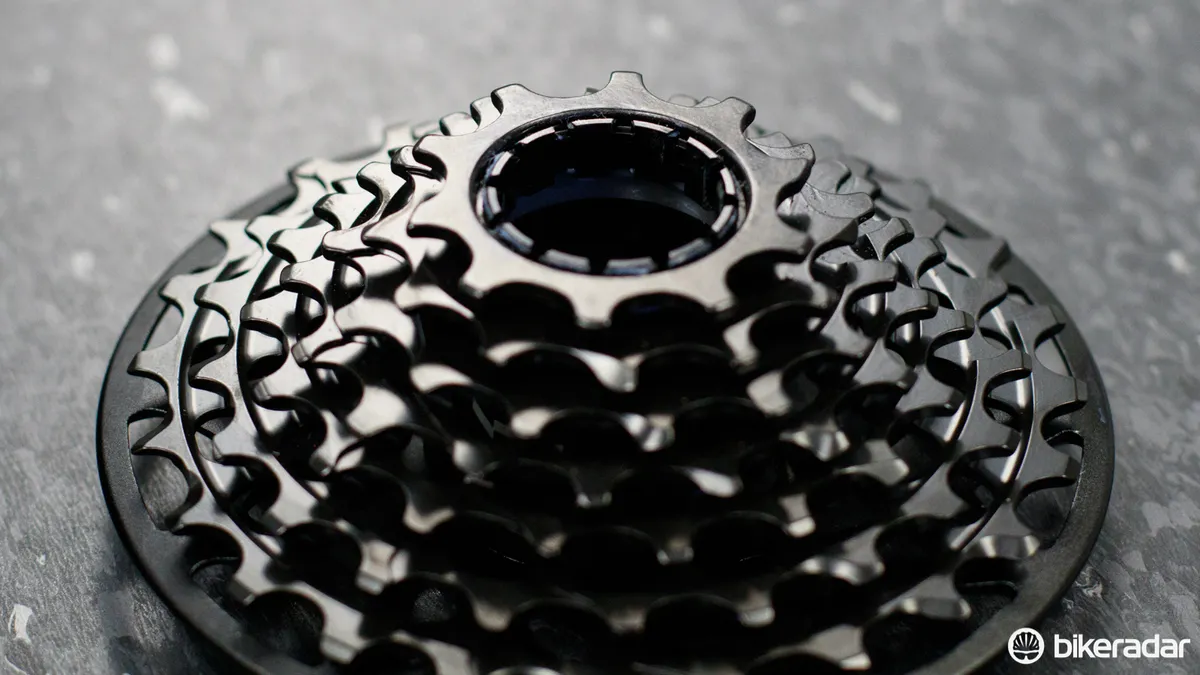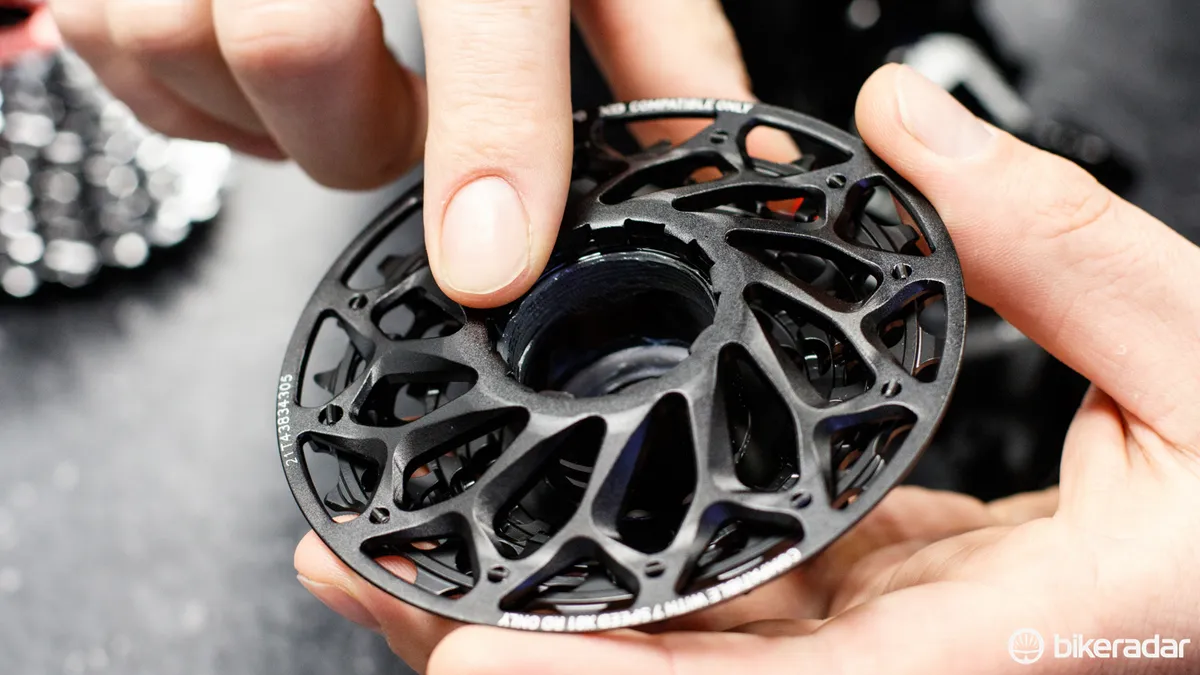If you’ve ever read about SRAM’s 1x11 groupset options (including the new Force and Rival road setups), you’ll likely have seen reference to an ‘XD Driver’. Simply put, this alternative freehub design came about from SRAM wanting a cassette cog smaller than an 11T – the smallest that common Shimano-type rear wheel freehubs can fit.
With this, the SRAM XD driver allows the fitment of a smaller (higher) 10T cassette cog and therefore gives greater range – and so validity – to 1x11 setups.
What it is
As an open patent, XD was created by SRAM with the introduction of SRAM XX1 in order to offer space for a 10T cassette cog and a claimed improved interface with the cassette. Since the release, we're now seeing brands such as e*thirteen and Leonardi Factory offer 9T-equipped cassettes.
XD was designed to work with existing hub axle designs, ratchet mechanisms and bearing placements and so many wheel brands have since created XD freehub bodies to retrofit to existing rear wheel and hub models.

Shimano does not offer XD-compatabile drivers. Pictured is a regular Shimano-type splined freehub body
Currently Shimano is just about the only hub and wheel manufacturer not offering an XD-driver option. Likewise, Shimano’s new 11-speed XTR and XT drivetrains do not use an XD-compatible cassette, and so are limited to an 11T smallest cog. Instead, Shimano's 11-speed cassettes use a standard 9/10sp Shimano-type freehub body.
If you’re unsure whether your wheels will work with an XD Driver, your best option is to ask a knowledgeable shop or contact the brand of your hub/wheel. If your wheels aren't labeled, contact the bike manufacturer through your local store.
Working with it
The SRAM XD driver and cassette works with existing Shimano-type cassette tools. The cassette slides on much like the existing cassette, which interlocks with a spline system at the rear of the driver. From here, a standard Shimano-type cassette lockring tool (with a spline length of 7-8mm) is used to tighten the cassette onto the body.
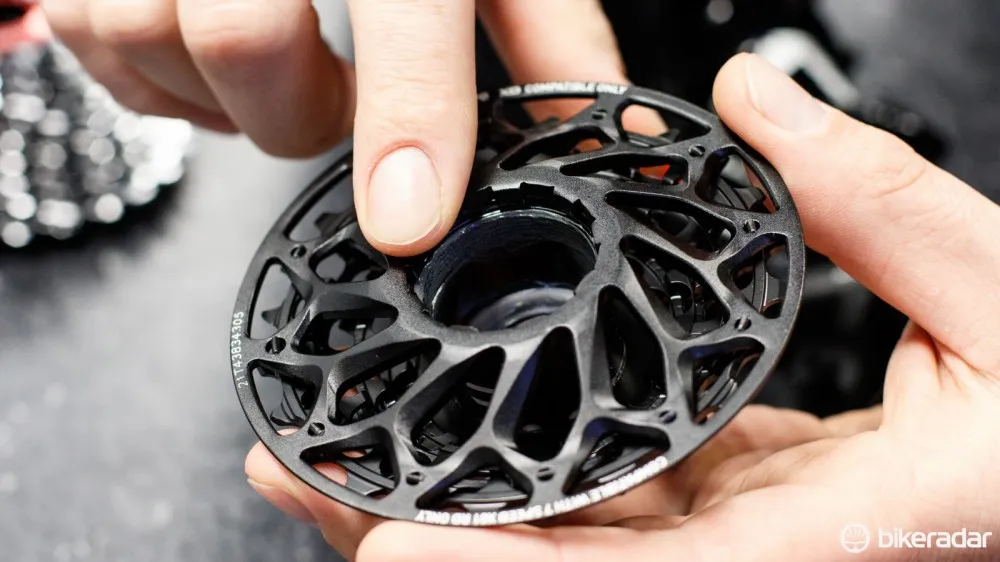
Apply grease here
Before sliding on the cassette, SRAM recommends the use of anti-seize or grease on the XD driver’s threads and spline.
The most crucial aspect of installation is not to over tighten the cassette. With this, the use of a torque wrench is highly recommended to achieve the tightening torque of 40nm (this is pretty high).
Removal of a SRAM XD-compatible cassette is no different to regular cassettes either, with a chain whip and lockring tool needed, with the process the same too.

